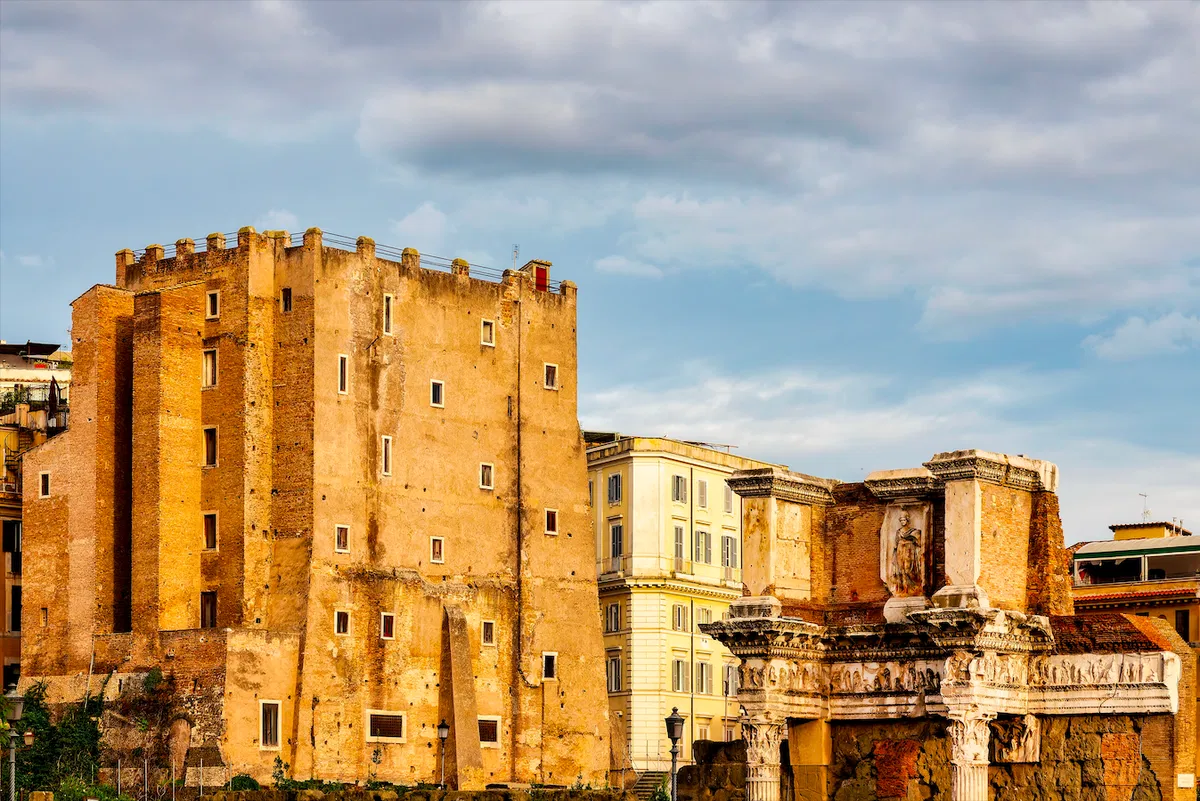Copyright euroweeklynews

Rome was shaken on this Monday November 3 when part of the medieval Torre dei Conti partially collapsed during renovation work. The incident initially injured a 64-year-old worker who was hit by falling debris and taken to San Giovanni hospital. Although he was reported in critical condition, regional authorities confirmed that his injuries were not life-threatening. Later during the rescue operation, one worker became trapped on an upper floor after an internal section of the tower collapsed. The tower, a historic 13th-century monument built by Richard Conti, brother of Pope Innocent III, is located near the Roman Forum and has a long history of structural vulnerability, including damage from a 1349 earthquake and partial collapses in the 17th century. Renovation works, funded by the EU’s post-pandemic recovery fund, were ongoing to reinforce and preserve the ancient stonework. The Rescue Effort Firefighters Race Against Time Emergency services were immediately deployed following the first collapse just after 11:30 am. Hundreds of tourists and passersby gathered as firefighters worked to secure the site. Three workers on scaffolding were rescued, while rescuers used a drone to inspect the tower’s interior before attempting to reach the trapped worker on the upper floor after the second collapse around 1 pm. The trapped worker was reported as “vigilant,” and rescuers assisted him with breathing while carefully removing debris to prevent further structural failures. The quick response of emergency teams prevented additional injuries and mitigated the risk of a larger disaster in the busy area surrounding the tower. Risks of Renovating Historic Buildings Preserving History Is Dangerous Work Renovating centuries-old structures carries unique hazards. Ancient masonry can be weakened by previous repairs, weathering, or foundational shifts, and even minor alterations during renovations can trigger collapses. Experts emphasise that strict assessments, reinforced scaffolding, and careful monitoring are critical for safety during historic preservation projects. Italy’s historic buildings, particularly those in Rome’s city centre, are exposed to constant wear and require ongoing maintenance. Torre dei Conti is especially sensitive due to its age, construction materials, and urban location. Any miscalculation or unforeseen weakness can lead to accidents, as illustrated by this incident. Investigation Findings Historical Vulnerability and Safety Measures The Torre dei Conti collapse highlights the delicate balance between preserving heritage and ensuring worker safety. Officials have launched a full investigation to determine the exact cause, whether due to structural weakness, renovation methods, or equipment failure. Restoration work has been suspended, and the surrounding areas near the Forum and Piazza Venezia have been cordoned off to protect residents and tourists. Witnesses reported hearing loud bangs, dust clouds, and seeing workers fall. One worker, aged 67, escaped from a balcony, describing the conditions as unsafe. Eyewitness accounts highlighted the chaos, with many tourists and locals rushing to the street after hearing the collapses. Authorities, including Rome’s mayor and Italy’s culture minister, were present at the site to oversee operations and public safety. What You Need to Know Historic Renovations Are High-Risk: Workers on ancient structures face significant dangers due to fragile, centuries-old masonry. Multiple Workers Were Affected: One worker critically injured, three rescued from scaffolding, and one trapped during the second collapse. Emergency Response Saved Lives: Firefighters’ rapid deployment and careful rescue operations prevented further casualties. Public Safety Remains a Priority: Surrounding areas were cordoned off, demonstrating the importance of precautions in crowded tourist zones. Lessons from the Collapse While the tower remains an iconic symbol of Rome’s architectural heritage, the incident emphasises the importance of strict safety protocols and careful planning during renovations. Authorities continue to investigate the collapse while reinforcing the need for safety standards on all restoration projects. Emergency services’ swift actions ensured that no additional injuries occurred, highlighting the importance of preparedness when dealing with centuries-old buildings in densely populated areas.



